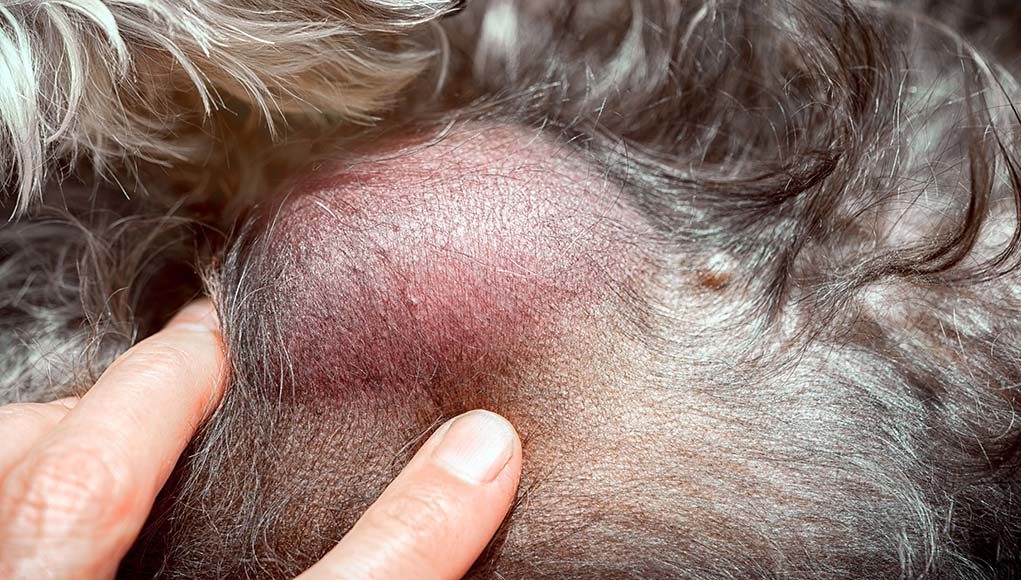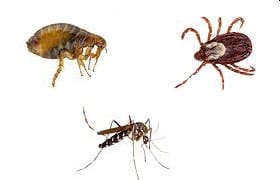Companion animals, like humans, can develop various types of cancer. These can appear on almost any part of the body and cause a variety of symptoms, depending on where they appear. A lump is one of the most common early-stage symptoms of soft tissue sarcoma in dogs, but lumps can be caused by a variety of neoplasms, not all of which are cancerous. Soft tissue sarcoma is cancer that affects soft tissues such as the skin and organs. It is a malignant type of tumor that is unfortunately common in dogs. This post examines soft tissue sarcoma in dogs, including early-stage symptoms, life expectancy, recurrence, and natural treatment options. We also investigate possible causes and risk factors for specific dogs.
What is Soft Tissue Sarcoma?
Soft tissue sarcomas are a type of cancer that develops from the skin and subcutaneous connective tissues, including fat, muscle, cartilage, fibrous connective tissue, nerves, and “pericytes” of small blood vessels in the subcutis. Because of their clinical behavior similarities, these tumors are frequently considered as a group. Soft tissue sarcomas can develop from any location.
Types of Soft Tissue Sarcomas in Dogs
The types of tissues do not always determine the type of sarcoma in dogs, but not all types can develop in the same locations. They are, however, all malignant, which means they are forms of canine cancer. The following are the most common soft tissue sarcomas in dogs:
- Fibrosarcoma: a cancerous tumor that develops in fibrous tissue and can appear anywhere in the body.
- Neurofibrosarcoma: a rare type of malignant tumor that occurs in the peripheral nervous system.
- Myxosarcoma: a malignant tumor capable of spreading.
- Leiomyosarcoma: a type of aggressive sarcoma that develops in smooth muscle tissue, such as the uterine or gastrointestinal lining.
- Rhabdomyosarcomas: skeletal muscle tumors that are malignant.
The case of malignant fibrous histiocytoma is debatable as to whether it should be classified as a neoplasm.
What Are the Causes of Soft Tissue Sarcomas?
The reason why a specific pet may develop this tumor or cancer is not obvious. There are very few tumors and cancers that have a single known cause. Most appear to be caused by a complex mix of risk factors, some of which are environmental and some of which are genetic or hereditary.
There is no known direct cause of soft tissue sarcomas in the majority of cases. Sarcomas at injection sites are common in cats but uncommon in dogs (for more information on this type of sarcoma, see the handout “Post-Vaccination Sarcoma in Cats”). Sarcomas on the head and neck can develop in cats exposed to a form of the feline leukemia virus known as the feline sarcoma virus.
Soft Tissue Sarcoma In Dogs Life Expectancy
We are unable to provide a soft tissue sarcoma life expectancy for dogs because this must be determined by the veterinarian. However, once a diagnosis has been made, the grade is regarded as the most important factor in determining the dog’s prognosis.
According to the grading system, dogs in the lowest grade (grade I) are the least likely to have a recurrence of soft tissue sarcoma. The life expectancy of dogs with grade V soft tissue sarcoma is the lowest. Other factors, such as underlying or secondary health issues, will, however, have an impact on the dog’s ability to recover.
Because soft tissue sarcoma in dogs is most common in older or senior dogs, palliative treatment may be used. This is because the chances of recovery are slim. The cost of surgery and other veterinary treatment will also be a consideration for many dog owners.
Early Stage Soft Tissue Sarcoma in Dogs Symptoms
The early-stage symptoms of soft tissue sarcoma vary greatly depending on the location of the tumor. All soft tissue sarcomas, on the other hand, present as slow-growing neoplasms that can appear anywhere on the body. They frequently have a smooth but firm consistency, an irregular, lobulated appearance, and are tightly attached to the underlying tissue and/or the skin.
The various clinical signs observed will be determined by the anatomical location where the tumor has settled. For example, if the dog has a myosarcoma in a muscle of the dog’s leg, pain and lameness may be observed when walking. There will be neurological changes in the case of neurofibrosarcomas (brain tissue).
However, there are some general early-stage symptoms of sarcoma in dogs that can lead us to believe they have this condition:
- swollen or inflamed lumps or bumps
- Weight loss and appetite loss
- Discomfort in general
- Tiredness
- Pain
- Poor coat condition
- Diarrhea and/or vomiting
If you suspect that your dog’s health is in danger, we recommend that you take him or her to the veterinarian as soon as possible.
Soft Tissue Sarcoma In Dogs Natural Treatment
We’ve determined whether or not these natural treatments for soft tissue sarcoma are likely to harm your dogs. So here are some natural treatments for soft tissue sarcoma dogs.
#1. Diet and nutrition
Nutrition is essential for healthy humans and dogs. When a dog has cancer, the situation becomes even more critical and complicated. When it comes to feeding a cancer-stricken dog, there are several factors to consider. Eating well and maintaining a healthy weight are thought to contribute to a canine cancer patient’s comfort and increase the likelihood of effective treatment.
Lots of Calories – High Energy
If your dog is losing weight or having difficulty maintaining its weight during cancer treatment, its diet should be high in calories. In many canine cancers, the tumor consumes more carbohydrates than the dog’s healthy tissue. As a result, the dog’s diet should contain no more than 25% carbohydrates.
Carbohydrates > Fats > Proteins
Fats can be used as fuel by healthy canine tissues, but tumors struggle to do so. The diet should contain 25-40% fat and 30-45% protein in the form of dry matter. (Note: The dry matter basis is the percentage of fat in the total dry value of the material excluding water weight.)
#2. Spices and herbs
Curcumin (Turmeric) for Dogs
There is evidence that Turmeric (with or without rosemary extract) can cause cancer cells to die before they reach the end of their healthy life span. Cells are supposed to commit suicide when they reach a point where they can no longer function properly. One important aspect of cancer is that cells “unlearn” how to do this and continue to live and replicate well beyond their normal lifespan. Turmeric and Rosemary, both individually and together, “reteach” some cancer cells to commit beneficial suicide again.
#3. Mushrooms
Mushrooms are a unique and frequently overlooked source of nutrition and medicinal-like compounds. Many species have been found to have anti-diabetic, anti-oxidant, cholesterol-balancing, anti-allergy, anti-microbial, anti-tumor, and anti-cancer properties.
The most difficult aspect of using mushrooms for a dog is obtaining appropriate extracts and whole fruiting bodies. To that end, this will concentrate not on all research on all mushrooms with anti-tumor and anti-cancer effects, but on those with extracts accessible to the average consumer who does not own and run their own mushroom-propagating business – through learning to propagate and use mushrooms is a rewarding (and tasty!) endeavor.
#4. Supplements
- Vitamins and minerals As a natural treatment for soft tissue sarcoma, some companies sell multivitamins for dogs. If your veterinarian determines that your dog is deficient in one or more nutrients, a vitamin supplement may be recommended. Otherwise, a well-balanced dog food selected with your veterinarian’s assistance already contains the essential vitamins and nutrients in appropriate doses for your dog. Taking a multivitamin may result in a buildup of fat-soluble vitamins such as A, E, D, and K, which can lead to toxicity.
- Fatty Acids Omega-3 Several studies have shown that omega-3 fatty acids can help with a variety of cancers in a variety of species. Omega-3 Fatty Acids can help by inhibiting cancer cell proliferation and encouraging cancer cells to stop living and growing faster than is healthy.
- In humans, L-Arginine is a semi-essential amino acid. It is known to play a role in wound regeneration and growth, as well as having some anti-cancer properties; however, research on this topic is inconclusive, particularly for canines. It may or may not be advantageous. If you’re interested in this supplement for your dog, consult a veterinarian.
#5. CBD Oil
More pet owners are incorporating CBD, a cannabinoid, into their pet’s healing regimen. More research on its benefits for dogs is needed, particularly in cancer research. However, studies have shown that CBD oil can reduce pain and calm dogs.
Remember that veterinarians cannot write prescriptions, and some local and state laws prohibit veterinarians from recommending cannabis products. To ensure that there is no trace of the psychoactive cannabinoid THC, only use CBD oil made from hemp oil.
#6. Aromatherapy Oils
Essential oils can also be used to treat soft tissue sarcoma in dogs. Boswellia sacra, also known as frankincense, is the best option.
While research is limited, this essential oil has been shown to fight inflammation and destroy cancer cells. However, it has not been shown to kill cancer cells in dogs, particularly soft tissue sarcoma cancer cells.
Soft Tissue Sarcoma Treatment in Dogs
The surgical removal of the tumor is the most effective current treatment for sarcoma in dogs. Surgery may be an option depending on the location, stage, and stage of the neoplasm at the time of diagnosis. Although surgery is the most important initial treatment, in many cases supportive treatment in the form of chemotherapy and/or radiotherapy is required.
Soft tissue sarcoma is classified into five grades: I, II, III, IV, and V. These differ depending on the stage of cancer development.
The fifth stage is known as the recurrent stage because soft tissue sarcoma in dogs recurs after treatment. Recurrent sarcoma can appear near the original tumor site, but it can also appear in tissue far away. This means that the treatment for the newly developed sarcoma will be determined by its new location.
Chemotherapy may be used before surgery in many cases to reduce the size of the tumor. When soft tissue sarcoma has spread, chemotherapy may be used as a form of palliative care for the dogs to help them live longer lives.
Recurrence of Soft Tissue Sarcoma In Dogs
In some studies, 80-90% of dogs have no soft tissue sarcoma recurrence after one to three years. With grade I and II tumors, the rate of metastasis to other organs is low, and chemotherapy is not recommended for these patients. Because grade III tumors can spread at a rate of up to 50%, chemotherapy, radiation therapy, or both should be considered.
Facts About Soft Tissue Sarcoma Recurrence in Dogs
Fear of cancer recurrence is common among people who have recently undergone treatment for soft tissue sarcoma. The majority of recurrences occur within two years of diagnosis. It may be exhausting to consider, but arming yourself with essential information may help you feel less overwhelmed.
#1. Soft tissue sarcoma can reoccur in various parts of the body.
One of the most important things to understand about sarcoma recurrence in dogs is that it can occur in the same or a different area of the body, according to soft tissue sarcoma surgeon Aimee Crago. Some recurrences of sarcoma are local. This indicates that the sarcoma has returned to the same location as the original tumor.
#2. You could be the best sarcoma screening method for yourself.
Many survivors have regular screening exams to check for the disease’s recurrence. However, according to Dr. Crago, approximately 50% of sarcoma survivors who have a local sarcoma recurrence discover it on their own. This is especially true for people whose tumors recur in the arms or legs, where the growths are more visible.
#3. Fear of a sarcoma recurrence is normal.
If the prospect of a recurrence of soft tissue sarcoma in dogs makes you nervous, you’re not alone. Anxiety, anger, distress, and fatigue are all normal feelings when preparing for a scan or dealing with the stress of recurrence treatment.
#4. You’ve learned a lot more about sarcoma the second time around.
There are some significant differences between being newly diagnosed with sarcoma and learning you have a recurrence. With a recurrence, you already know so much. You’ve formed relationships with members of the care team and have a general idea of what treatment will entail.
#5. Consider a clinical trial for a recurrence of advanced sarcoma.
There are numerous treatments available for people with advanced diseases. These include various drugs and radiation therapy approaches. You should also think about participating in a clinical trial for soft tissue sarcoma. Clinical trials are research studies that evaluate the efficacy of new therapies.
#6. Look for a community of sarcoma patients.
Because sarcoma is uncommon, chances are you don’t know many sarcoma survivors. “Typically, people with sarcoma do not have the experience of meeting other people with the disease or survivors in their communities,” Ms. Mitchell says.
Treatment Options for Soft Tissue Sarcoma in Dogs
There have been some reports of alternative therapies for cancer treatment in dogs. However, these treatments are not adequately supported by scientific research, and using them instead of medical intervention can be fatal to the dog. Supportive therapies may be used in conjunction with veterinary medical treatment, but this must be approved by the veterinarian first.
How long can dogs live with soft tissue sarcoma?
Low-grade soft tissue sarcomas have a very good prognosis, especially if surgically completely removed. Low-grade tumors have a 2-4 year survival rate. Even with aggressive treatment, the majority of people with high-grade tumors live for less than a year.
Is soft tissue sarcoma curable in dogs?
Low- to intermediate-grade soft tissue sarcomas that can be completely removed with aggressive surgery has an excellent long-term prognosis. Control rates for low-grade soft tissue sarcomas that are partially excised and then treated with radiation therapy are also excellent.
How aggressive is soft tissue sarcoma in dogs?
More aggressive sarcomas include liposarcomas and rhabdomyosarcomas. Soft tissue sarcomas metastasize and spread throughout the body in 10-20% of cases. When this tumor does metastasize, it usually spreads to your dog’s lungs or lymph nodes.
Is soft tissue sarcoma in dogs painful?
In its early stages, soft tissue sarcoma may not cause any symptoms. A visible lump or swelling may develop as the tumor grows. A tumor that presses on nerves or muscles can cause pain.
What is the last stage of sarcoma?
When a sarcoma has spread to other parts of the body, it is considered stage IV. Sarcomas in stage IV are rarely curable. However, some patients may be cured if the primary tumor and all areas where the cancer has spread (metastases) can be removed surgically.
How quickly can sarcoma spread?
Soft-tissue sarcomas grow at different rates, but they typically grow in weeks or months. Any mass that grows during this period requires immediate medical attention.
Frequently Asked Questions
How aggressive is sarcoma cancer in dogs?
Sarcomas develop on or beneath the skin. They are a relatively common type of cancer in dogs. Unfortunately, if left undiagnosed or untreated, sarcomas can progress to a malignant form of tumor and become quite aggressive.
Should I have my dogs sarcoma removed?
Surgery is the most commonly recommended treatment for soft tissue sarcomas. It is critical to remove the tumor in its entirety, as well as a large margin of normal-appearing tissue.
What is the last stage of sarcoma?
When a sarcoma has spread to other parts of the body, it is considered stage IV. Sarcomas in stage IV are rarely curable. However, some patients may be cured if the primary tumor and all areas of cancer spread (metastases) can be removed surgically.
Related Articles:
- Best Flea and Tick Pills For Cats In 2023
- HOW DO CATS MATE? Breeding and Reproduction of Cats
- Cheap Pet Insurance For Dogs: 2023 Coverages and Prices
- Dogs With Down Syndrome: Causes, Symptoms, and Care
- Can Dogs Be Gay? Dogs Sexuality Explained
- Allergic Conjunctivitis In Dogs: Causes, Symptoms, and Treatment
- HOW TO PREVENT AND KEEP TICK OFF DOGS: Best Treatments and Remedies






